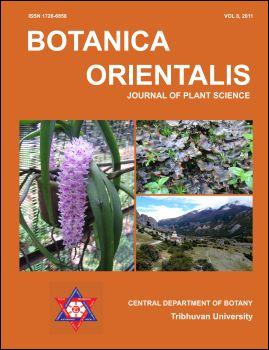Disturbances and biodiversity in forest ecosystems: A temperate zone perspective
DOI:
https://doi.org/10.3126/botor.v8i0.5552Keywords:
avalanche, bark beetle outbreak, forest management, protection, succession, wind throwAbstract
In the temperate zone windstorms and bark beetle attacks represent the main natural forest disturbances; in steep mountain areas snow avalanches also may “destroy” forest stands completely. In the densely populated and intensively used temperate zone of Europe affected forest stands will be cleared and reforested immediately after such “catastrophes”. Therefore we have only little knowledge about the influence of such natural disturbances on both the stand development and the biodiversity of native forest ecosystems. And we do not have quantitative data on to which degree forest management changes the biodiversity compared to the natural disturbances. Since about two decades several permanent plot studies have been running in European forests affected by such natural disturbances, mainly with focus on plant species. Here we first outline the importance of disturbances for biodiversity in forest ecosystems and then discuss whether it is possible to combine both biodiversity protection and forest management. For that we use four recent case studies carried out in the two oldest national parks in Germany, three of them being long-term observations on permanent plots for up to two decades. Disturbances like wind throw, bark beetle outbreak and snow avalanche strongly influences the tree layer structure, creating micro-habitats for many plant, animal and fungi species, which naturally belong to the forest ecosystem. Such disturbances in future should be included into management schemes in forestry to improve biodiversity. We found evidence that it is really possible to combine timber utilization with biodiversity protection. As long as the management impact is reduced (e.g. single tree harvesting, using natural regeneration), species diversity of several taxonomic groups (in our study: vascular plants, soil living Carabidae, and soil living fungi) may not be different significantly from a pristine forest. Interconnecting resource use with biodiversity protection will be a main task for both foresters and conservationist in the decades to come – and it seems to be a possible option for a sustainable land use in many parts of the world.
doi: http://dx.doi.org/10.3126/botor.v8i0.5552
Botanica Orientalis – Journal of Plant Science (2011) 8: 1-9
Downloads
Downloads
Published
How to Cite
Issue
Section
License
This license enables reusers to copy and distribute the material in any medium or format in unadapted form only, for noncommercial purposes only, and only so long as attribution is given to the creator.




